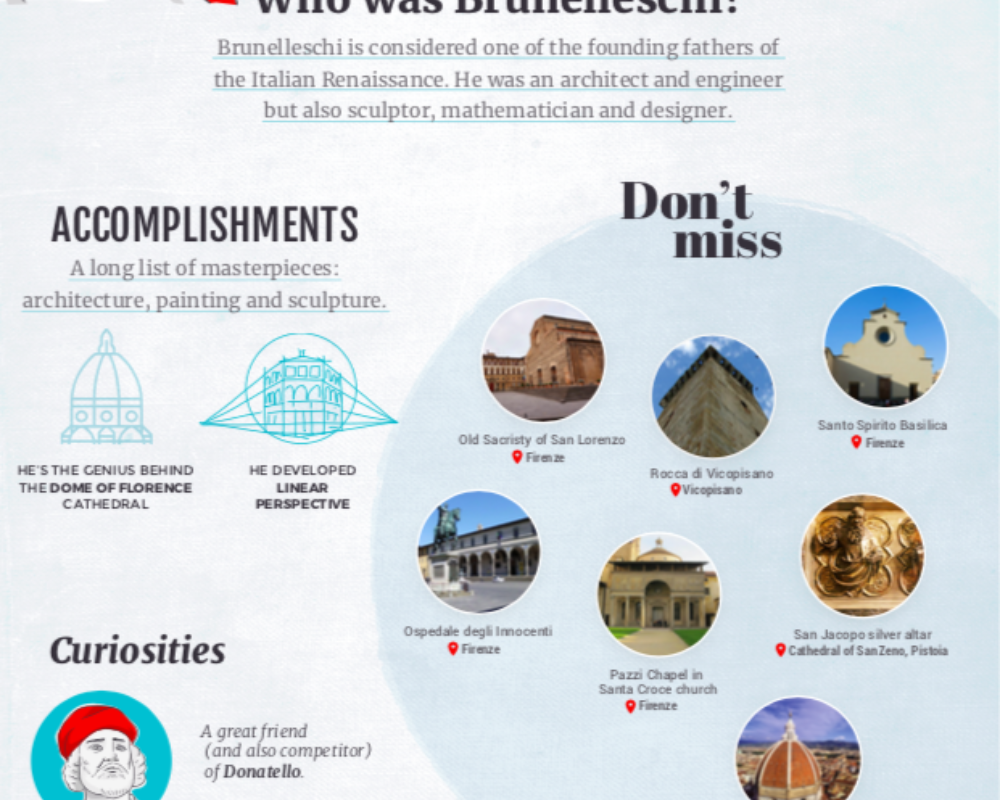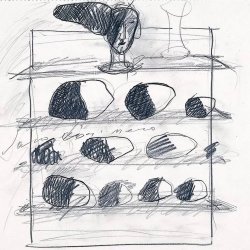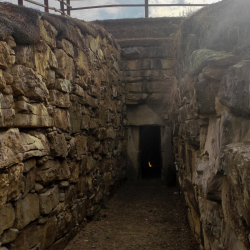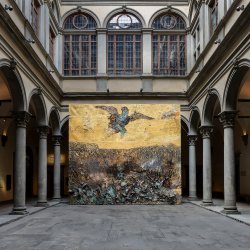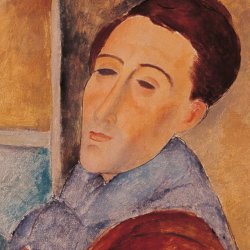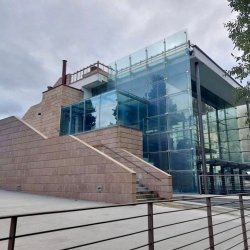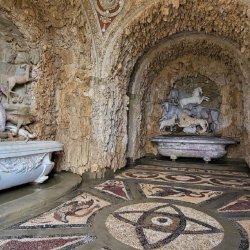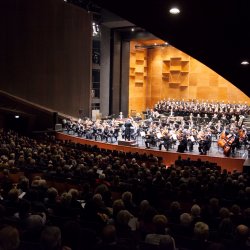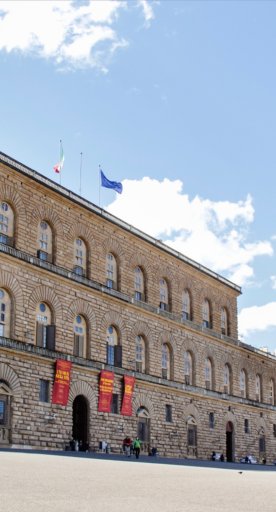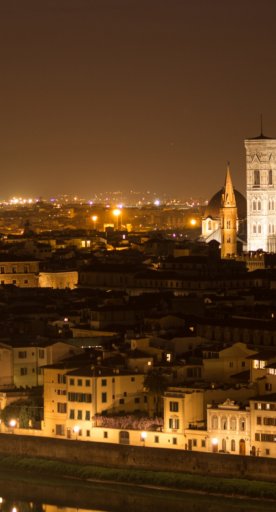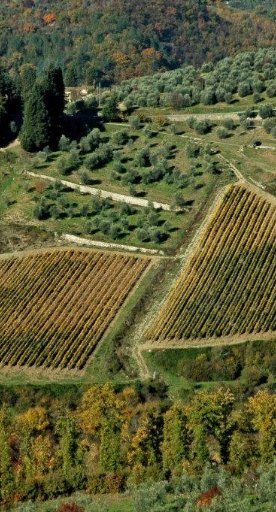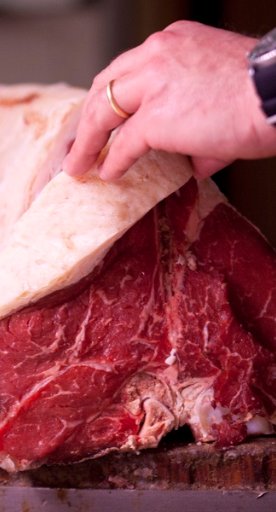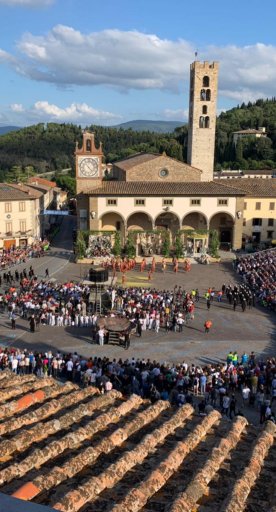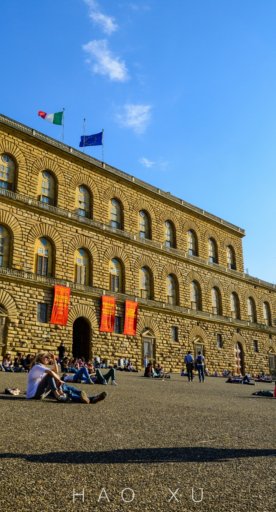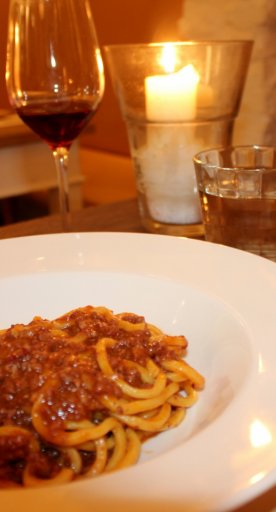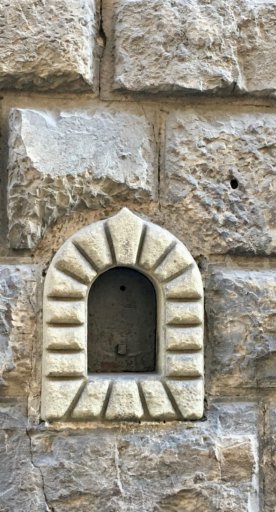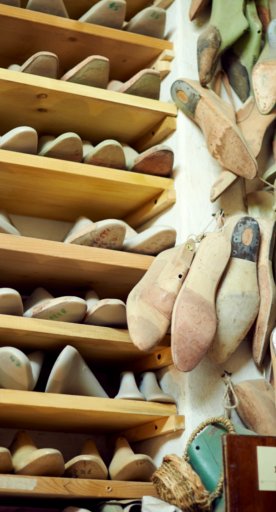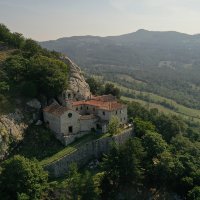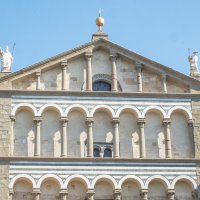Brunelleschi: life, facts, curiosities and art
The Florentine father of the Renaissance
Architect, engineer, sculptor, mathematician and designer: Filippo Brunelleschi is today remembered as the father of linear perspective and the genius engineer behind the Florence Cathedral’s incredible dome. Along with his friend Donatello, Brunelleschi remains one of the most important figures in Florentine history and is considered one of the founding fathers of the Italian Renaissance.
-
1.Brunelleschi: life and art
-
2.What makes Brunelleschi’s contribution to architecture so important?
-
3.Where to find works by Brunelleschi in Florence
-
4.Brunelleschi’s architecture
-
5.Brunelleschi’s sculpture
Brunelleschi: life and art
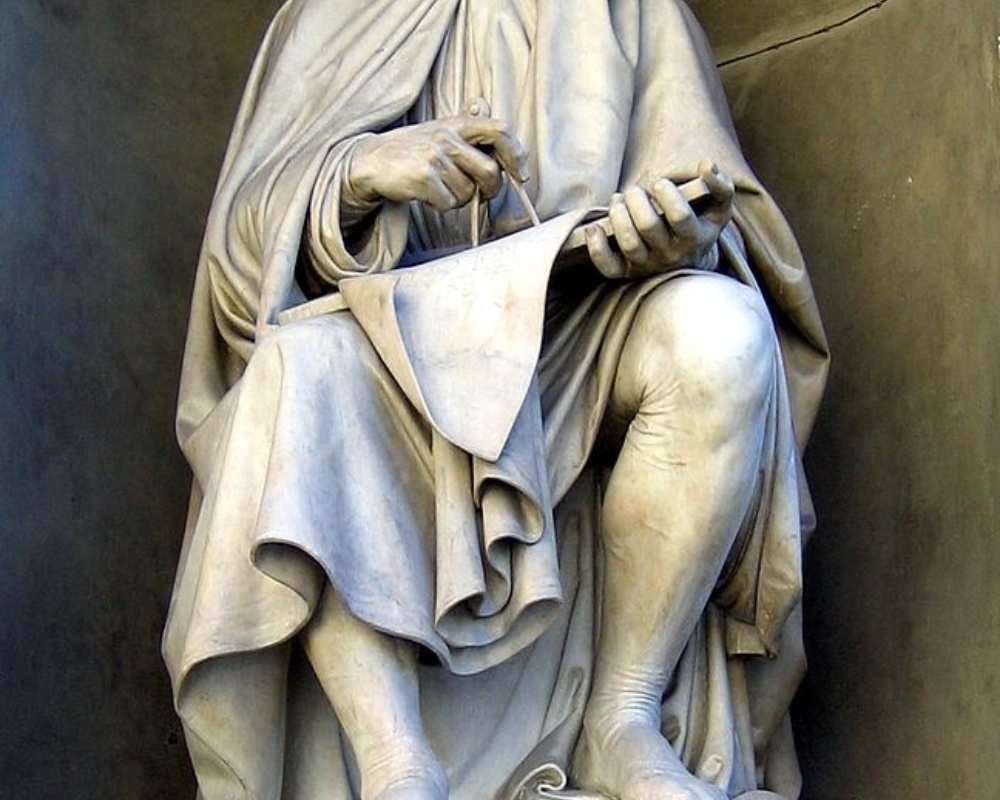
The Renaissance man was born in 1377 in Florence, though few records of his youth survive. Educated in both literature and mathematics, young Brunelleschi joined the artisan class and trained as a goldsmith. The lines between goldsmithing and sculpture were fuzzy – as we see with both Ghiberti and Donatello – so the young Brunelleschi worked in sculpture, until a “lost competition” set him on another path.
In 1401, Brunelleschi was one of seven participants in the very prestigious competition to choose the artist for the new set of bronze doors for Florence’s Baptistery (now located on the building’s north side). Seven competitors had to each produce a gilded bronze panel depicting the assigned topic, the Sacrifice of Isaac. Brunelleschi and Lorenzo Ghiberti were the two finalists, but the winner of the commission was Lorenzo Ghiberti, who also went on to create a second set of doors known as the Gates of Paradise. Meanwhile, Brunelleschi decided to dedicate himself to architecture rather than sculpture.
What makes Brunelleschi’s contribution to architecture so important?
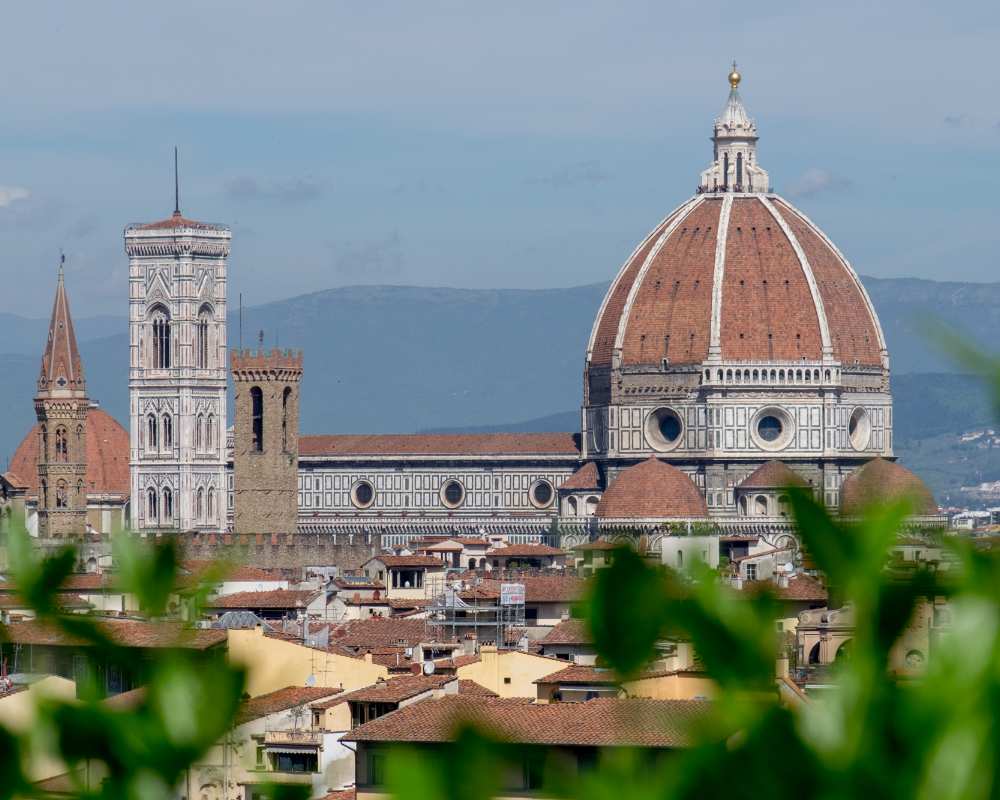
His work represents the beginning of the Renaissance style, the period that came after Gothic art. Put simply, in Gothic architecture there are pointed arches, while Renaissance architecture favors semi-circular arches, generally as part of regular repetitions of harmonious shapes – squares, circles and the like. While Brunelleschi’s most famous work, the Dome of Florence Cathedral, is Gothic in style, this is the culmination of a building begun in another era (the end of the thirteenth century). If you take a walking tour around Florence to some of its major churches, you can easily understand the impact that Brunelleschi had on style. Connected to his work as an architect (a modern term that defines what he was, to a certain extent), throughout his lifetime, Brunelleschi also invented hoisting machines, designed fortifications for Florence and other towns, created rigs for stage sets and designed a ship to transport marble to Florence from Pisa via the Arno River - and saw it sink on its first trip!
Brunelleschi is also considered the inventor of one-point linear perspective in drawing and painting, which revolutionized the representation of space and our perception of the world. Brunelleschi died on April 15, 1446. His tomb is found in the crypt of Florence’s Cathedral, where the epitaph reads, "How much Filippo was eminent in Daedalus’s art is visible in the magnificent dome of this very famous temple, and by the many machines invented by him with divine intellect. And for the excellent qualities of his soul and his singular virtue, his well deserving body was buried in this earth on May 15, 1446, by order of his grateful motherland.”
Where to find works by Brunelleschi in Florence
Brunelleschi's architecture and sculpture:
Brunelleschi’s architecture
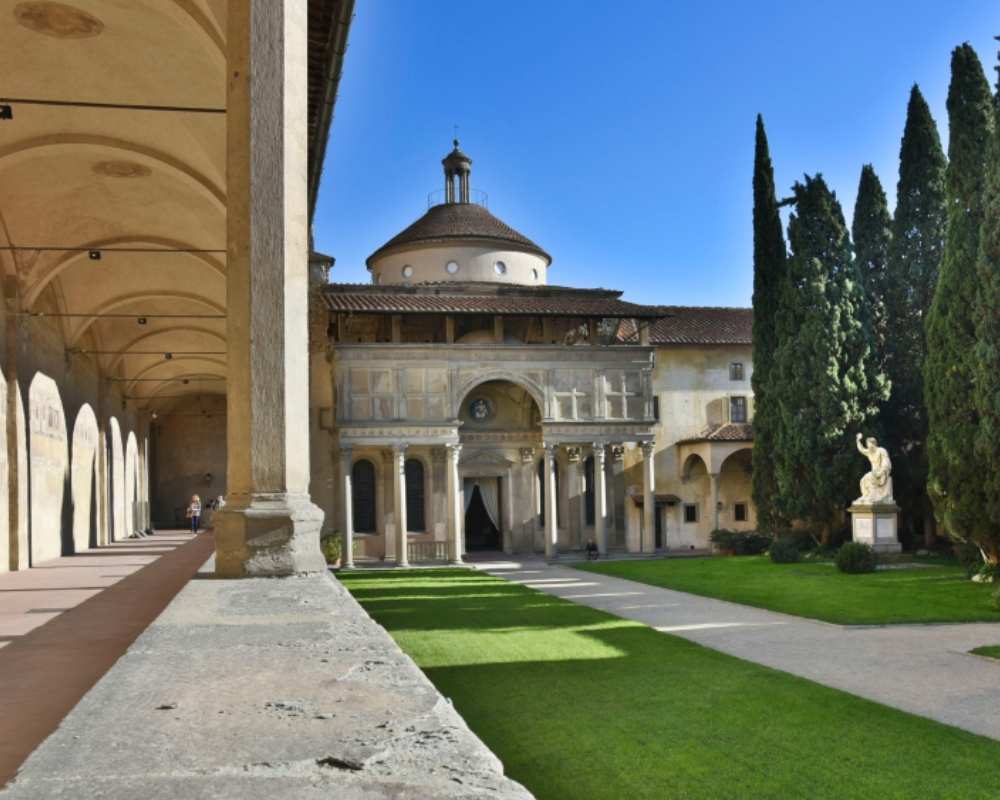
Brunelleschi played a role in the construction of all or part of almost all the major churches in Florence – the dome of the Cathedral, San Lorenzo, the Pazzi Chapel at Santa Croce, and Santo Spirito.
Of course, his most famous masterpiece is the Dome of the Florence Cathedral. The city’s cathedral had been under construction for over 100 years, yet architects had yet to understand how to build a dome over its very wide apse. For this, they held yet another competition in 1418: again, Ghiberti and Brunelleschi were two main participants, but Brunelleschi won this time around due to his innovative proposals for money-and-timber-saving scaffolding. The project spanned most of Brunelleschi’s life (1420–1436) and remains the largest masonry dome in the world. One of his first works is the loggia of the Ospedale degli Innocenti in piazza Santissima Annunziata (now the Museo degli Innocenti). This graceful series of semi-circular arches is only a façade, added to unify a group of older buildings. Later, the pattern was carried around the whole piazza.
Sitting kitty-corner from the Medici family’s Palazzo (now Palazzo Medici-Riccardi) was their parish church of San Lorenzo, which by the 1420s was falling into ruin. Brunelleschi initially contributed only the Old Sacristy or burial chapel for the Medici family, but his commission was then extended to include rebuilding the entire church. This was his first occasion to apply his architectural style and theories on a large scale. Across town, he also designed the Church of Santo Spirito, incomplete and hence heavily altered after his death. Also finished after his death was the Pazzi Chapel in Santa Croce, an excellent comparison to the Old Sacristy and the culmination of many years of experience designing similar spaces.
The Rocca del Brunelleschi in Vicopisano is a beautiful example of medieval and Renaissance military architecture designed by Filippo Brunelleschi in 1438 following the village’s conquest by the Florentines. The tower has a keep with trapdoors and enceintes. The keep leads to a 70-metre-long wall that’s linked to a tower down the hill.
Brunelleschi’s sculpture
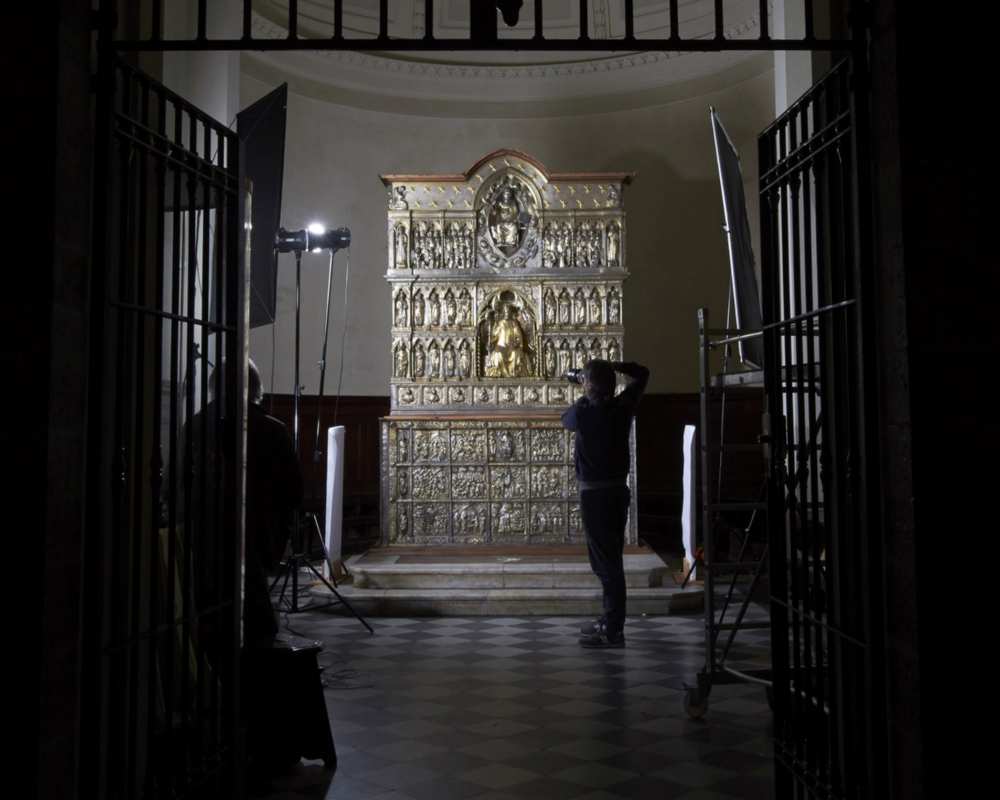
Inside the Bargello Museum, you can visit Brunelleschi's bronze tile depicting the Sacrifice of Isaac, his competition panel for the Florence Baptistery doors, set up in comparison to that by Ghiberti.
In 1410, another competition brought Brunelleschi and Donatello head to head: the famed Crucifix. The Crucifix made by Donatello for the Church of Santa Croce was nicknamed by Brunelleschi “the farmer Crucifìx” for its apparent peasant-like depiction of Christ. Challenged to better Donatello’s rendering, Brunelleschi set out to create the same subject for the Church of Santa Maria Novella. It currently hangs in a chapel to the left of the high altar.
Located in the Cathedral of San Zeno in Pistoia, the silver San Jacopo altar can be found inside the Chapel of the Crocifisso, or Giudizio. This impressive work was made between 1287 and 1456 by the hands of some of the best artisans and artists of the era, including Brunelleschi. The all-round statue of St. John the Evangelist (1400-1401) and the two busts of the prophets Jeremiah and Isaiah are attributed to Brunelleschi.

